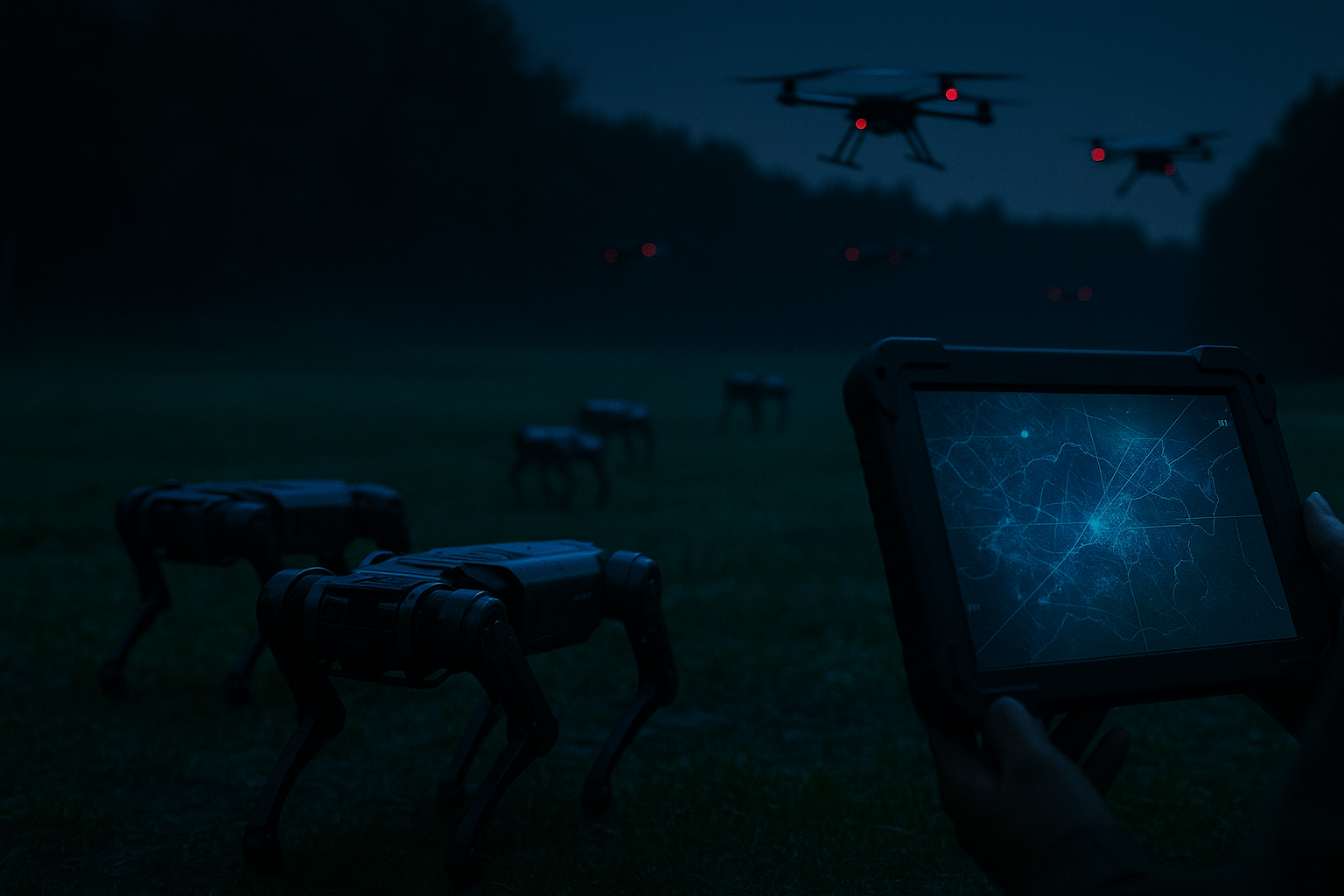Robot Dogs, Drone Swarms: How China Could Weaponize DeepSeek
By Tredu.com • 10/27/2025
Tredu

What the Reuters investigation found
China is folding domestic frontier models, including DeepSeek, into military research and procurement, with proof points that range from autonomous ground vehicles to battlefield decision software. Documents, patents, and tenders tie state groups such as Norinco to DeepSeek-class models for real-time target recognition, swarming, and operational planning. The goal is to raise tempo, shorten sensor-to-shooter loops, and reduce reliance on foreign tech through what officials call algorithmic sovereignty.
From lab paper to field robot: autonomy gets legs
The near-term showcase is autonomy at the edge. Research programs describe robot dogs that scout in packs, map indoors, and relay targeting data, while small quadrotors coordinate as swarms that can search, fix, and shadow vehicles. The same software stack can live inside low-cost unmanned surface craft for harbor denial. University teams, including Beihang and Xi’an Technological University, appear frequently in filings tied to perception, multi-agent coordination, and contested-spectrum control.
Norinco’s role, and the P60 signal
Reuters highlights state giant Norinco as an integrator of DeepSeek-style models into vehicles and weapons-adjacent platforms; one example is a P60 autonomous combat-support vehicle unveiled earlier this year. The P60 is a signal that the PLA wants modular, model-driven autonomy that can extend from convoy logistics to perimeter security. If validated in trials, similar control stacks can step down into robot dogs and step up into larger unmanned ground systems.
Chips, workarounds, and the supply baseline
Export bans seek to choke the highest-end training chips, yet Chinese projects still show Nvidia parts in the research loop, while deployments lean more on domestic accelerators such as Huawei’s Ascend. U.S. officials have accused DeepSeek of skirting controls; the company denies the claims. The practical picture is a hybrid one: pre-trained or distilled models, domestic inference hardware, and software optimized for tight power budgets at the edge.
Why DeepSeek matters for command decisions
DeepSeek’s pitch is cheaper training and fast reasoning. For the military user, that translates to route planning, red-blue course-of-action analysis, and rapid triage of sensor feeds. Reuters reporting points to tenders for target identification and scenario analysis; those are the glue between swarming front ends and human decision makers. If commanders trust model outputs, they can push authority forward, which is the core promise of algorithmic sovereignty in combat.
Safety, brittleness, and the fog of war
Open literature flags safety gaps in DeepSeek model families, including high prompt-attack success rates in Chinese-language evaluations. Battlefield stress adds adversarial noise, spoofing, and degraded comms. That raises risks of false positives, fratricide, or collapse under jamming. Chinese labs are racing to harden perception and control, but the safety delta is a real limiter, which is why many prototypes still keep a human on the loop with veto rights.
What a PLA playbook could look like
A plausible playbook, drawn from tenders and demos, runs in phases. Phase one, robot-dog teams and micro-UAVs conduct reconnaissance, create mesh relays, and mark targets with vision beacons. Phase two, swarms surge from multiple axes, using consensus to pick aim points while a larger unmanned ground vehicle covers re-supply and casualty evacuation. Phase three, model-guided fires link artillery, loitering munitions, and electronic attack; a staff LLM proposes follow-on routes and deconfliction packages. Each phase relies on resilient autonomy more than pristine bandwidth.
Countermeasures, and how rivals will respond
Adversaries will meet swarms with layered electronic warfare, decoys, and kinetic shotguns for the last 500 meters. Expect investment in signature management and smart smoke to break multi-sensor fusion, plus rapid-cue counter-UAS from vehicles and ships. On the software side, blue teams will train models to detect DeepSeek-style behaviors and trigger bait patterns that waste swarm magazine depth. The contest becomes model versus model, with data curation and simulated training as the decisive inputs. (Analytical inference from Reuters evidence and current doctrine.)
Industrial policy, secrecy, and the pace question
Beijing’s tight coupling of the tech stack with state buyers shortens cycles between paper and prototype. It also hides failures; much of the real telemetry sits behind secrecy rules. Reuters notes the opacity, yet the volume of patents and tenders suggests sustained funding through multiple five-year plans. For outside analysts, procurement breadcrumbs, campus partnerships, and chip import patterns are the best proxies for pace.
The strategic stakes for Washington and allies
The U.S. is tightening export controls, hardening alliances, and accelerating domestic AI for defense to keep a capability edge. If China can field reliable robot dogs, AI drone swarms, and DeepSeek-driven decision tools at scale, the cost curve of denial missions tilts fast. That is why Washington’s policy now marries hardware controls with coalition tech sharing and red-teaming against open-weights models. The qualitative race is not only about chips; it is about safer stacks, robust training data, and trust in autonomy under fire.

How to Trade Like a Pro
Unlock the secrets of professional trading with our comprehensive guide. Discover proven strategies, risk management techniques, and market insights that will help you navigate the financial markets confidently and successfully.


